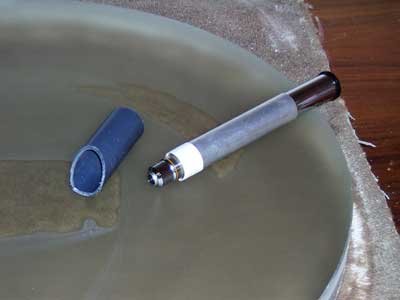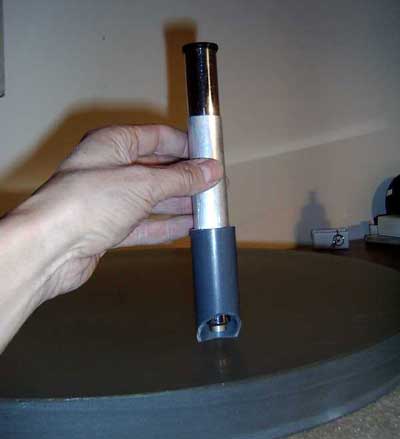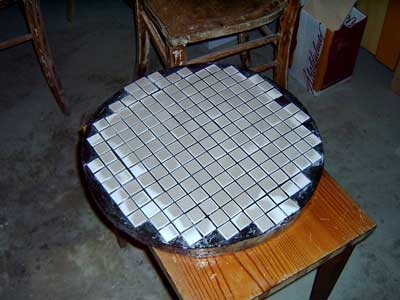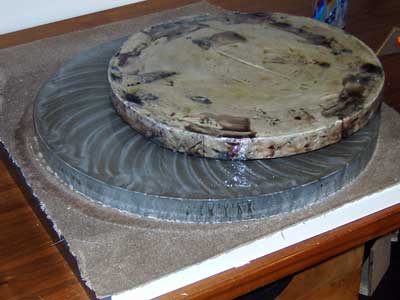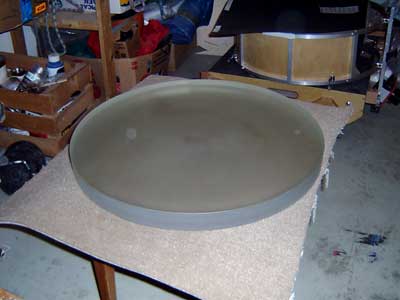The blank was perfect: Using a polarization
test, no internal tensions could be detected. The pre-generated curve was perfectly spherical and the back was flat (all
measured with a spherometer) ![]() .
.
Carbo, Microgrit, pitch, and Ceri HPC was supplied by Stathis Kafalis.
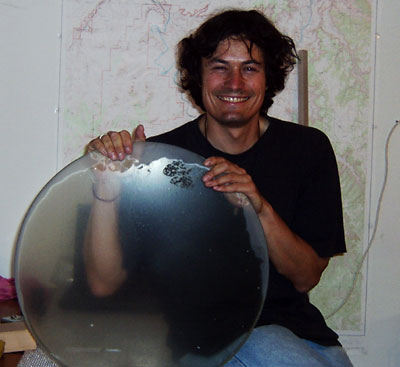
The tool was thoroughly dried for about a week.
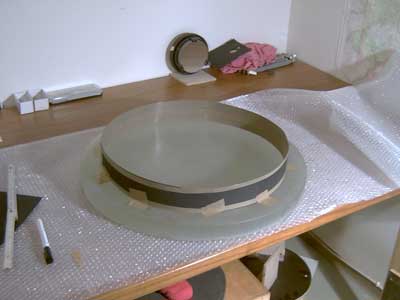
The 2.5 x 2.5 tiles were glued to the tool by fast-binding (5 min) polyester resin. The joints between the tiles were filled as well with resin to prevent Carbo from hiding there. The sides and the back were painted with several layers of varnish.
The mirror rested on a piece of carpet and a thick, flat board on a solid table.
All the grinding (and polishing) was done tool on top (TOT).
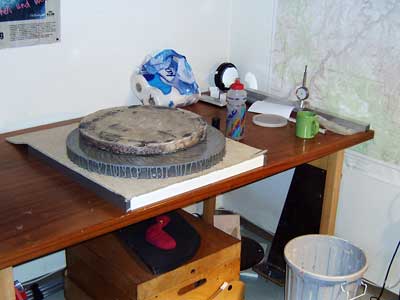
The tool was matched to the blank with Carbo 180. In order to have sufficient weight on the tool, an additional 10 kg of iron weights were packed on top.
For grinding, I used circular strokes. With heavy tools, this is easier then conventional W strokes as the tool remains in permanent motion. Furthermore, these circular motions allow you to deeply immerse yourself into the Zen of grinding in a much faster way (... as Stathis says).
The spherical surface was tested during grinding by a spherometer (Thanks to Lothar, who made two of them, one for himself and one for me!)
The sagitta was measured with a beam spherometer over the entire diameter of the mirror. During roughing in, the sagitta increased from 8.3 to 8.4 mm.
Roughing in of the tool took about 3 h, during which more and more of the surface of the tool got into contact with the mirror. This can be seen on the pictures to the right. About 300 g Carbo 180 were used.
Carbo was spread on the mirror and was then mixed with water.
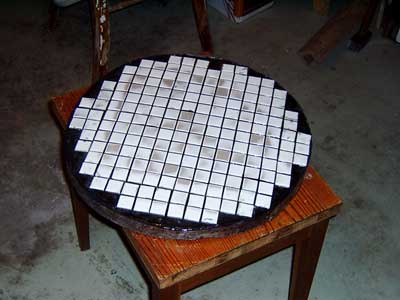
Progress was checked with an improvised microscope consisting of a microscope objective and an eyepiece with 40x and 120x). Sagitta and sphericity were also verified after each grade.
I continued with Microgrit WCA. Microgrit was mixed with water (1:4) in a bottle as a thin suspension, such that the tool glides easily. During each session, I added water once as soon as the movements became harder. After 15 minutes, the grit was wiped off and new Microgrit was applied.
Microgrit 15 µm was used for 3 h, using about 100 g. This is relatively long, but I wanted to be on the safe side and make sure that no deep pits were left from the round Carbo grits in the transition to the flat particles of the Microgrit.
After Microgrit 15 µm, the reflection of an LED lamp was well visible under a grazing angle of 10° to the surface, and was faintly visible under an angle of 15°.
Microgrit 9 µm was used for approximately 2 h, using about 50 g. Afterwards, the reflection of the LED was well visible under 15° and faintly visible under 20°.
Microgrit 5µm was used for 1.5 hours, using 30 g. Afterwards, the reflection of the LED was well visible under an angle of 20°, faintly visible under 25°, and not at all visible under 30°.
The last grade was Microgrit 3 µm, which was ground for 45 minutes, using 15 g. Afterwards, the reflection of the LED was weak under 25° and just faded under 30°.
As judged by the reflectivity measurements, the last three grades (9µ to 3µ) were mostly finished already after half an hour. After that, there was no major improvement any more. Again, to be on the safe side, I extended the grinding time for each grade.
